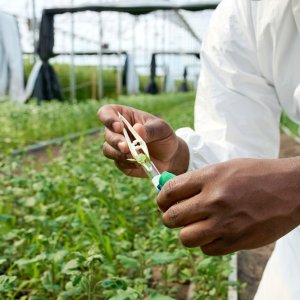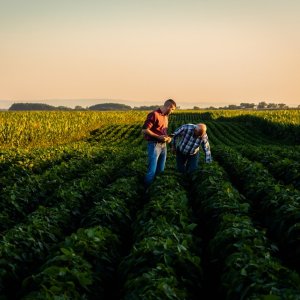
SADER Promotes Cloud Seeding Program in the North of Mexico
 By Eliza Galeana | Junior Journalist & Industry Analyst -
Tue, 03/21/2023 - 18:56
By Eliza Galeana | Junior Journalist & Industry Analyst -
Tue, 03/21/2023 - 18:56
The National Arid Zones Commission (CONAZA) launched a rain stimulation program in Baja California and Tamaulipas to diminish the effects of drought on agriculture and livestock production.
CONAZA, a body attached to the Ministry of Agriculture and Rural Development (SADER), explained that the project consists of releasing silver iodide molecules from an airplane to promote rain precipitation in specific areas in the states of Baja California and Tamaulipas. The commission added that this process generates moisture and runoff toward the meadows and dams and is environmental waste free.
According to the American Council of Science and Health, this process, also referred to as cloud seeding, consists of introducing very small amounts of a crystalline substance into clouds. The tiny crystals or nuclei provide a surface area and act as a catalyst, enabling the cold water in the cloud to form crystals of ice. The newly formed ice flakes quickly grow and fall from the clouds in the form of rain or snow back to the surface of the Earth.
The CONAZA program launched two flights in Baja California on Feb. 15 and 20, 2023, using the Mexican Air Force King Air 5213 aircraft, when favorable conditions of cloudiness were found. The flights released 120 liters of reagent, which covered the southern area of a polygon located in the municipalities of Ensenada and San Quintin, in the towns of El Descanso, La Huertita, Cataviña, San Jose, El Morro and Kilometer 147.
In Tamaulipas, the state government provided a twin-engine Turbocomander aircraft to carry out the operation. The stimulation area is located in the irrigation districts DR-024 and DR-025, in the area of Bajo Rio Bravo. Overflights will take place starting on March 20, 2023.
Last year, the project benefited the states of Baja California, Sonora, Tamaulipas, Sinaloa and Chihuahua, as well as the Lagunera region. Moreover, in 2021, this technology helped fight at least 25 forest fires, mainly in Nuevo Leon and Chihuahua, while putting out a remaining fire in Sierra de Arteaga.
In Mexico, the first attempts at cloud seeding date back to 2021, allowing an average increase of 45.1% of excess rain. This was recognized as a positive outcome, since the American Meteorological Society qualifies as a success the increase of the liquid between 10 and 20%.
The planning and scheduling of these projects are based on an analysis of meteorological conditions defined by the National Meteorological Service, in addition to information obtained through mobile applications and satellite images.
















